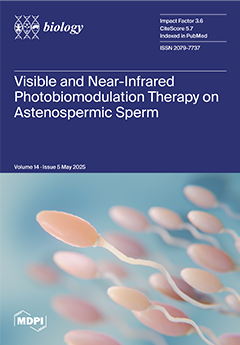The alterable light/dark cycle in a plant factory with artificial lighting eliminates the traditional concept of day and night in nature. Adjusting the light/dark cycle to closely align with the inherent circadian rhythm of plants can enhance biomass accumulation. In this study, we examined the effects of different light/dark cycles on the photosynthetic performance, growth, and energy use efficiency of two hydroponic lettuce cultivars (
Lactuca sativa L. cv. ‘Frillice’ and ‘Crunchy’). The lettuces were subjected to four light/dark cycle treatments—16 h light/8 h dark (L
16D
8, as control), 12 h light/6 h dark (L
12D
6), 8 h light/4 h dark (L
8D
4), and 4 h light/2 h dark (L
4D
2), all under LED lamps with white combined red chips at the same light intensity of 250 μmol m
−2 s
−1. Photosynthetic performance and growth index were measured during the slow and rapid growth stages, corresponding to days 9 and 21 after transplanting, respectively. For Frillice, L
12D
6 achieved the highest shoot dry weight and light and electricity energy use efficiencies on days 9 and 21 after transplanting, primarily due to the largest leaf area, leaf number, and net photosynthetic rate. For Crunchy, L
12D
6 and L
8D
4 increased shoot fresh and dry weights due to larger leaf area and leaf number on day 9 after transplanting compared with L
16D
8. Subsequently, the lettuces in L
16D
8 exhibited a rapid increase in leaf area and leaf number, along with a high net photosynthetic rate during the rapid growth stage, resulting in fast shoot biomass accumulation. There were no significant differences in the shoot dry weight and energy use efficiency between L
16D
8 and L
12D
6 on day 21 after transplanting. Two lettuce cultivars in L
16D
8 both exhibited the highest water use efficiency on day 21 after transplanting. In conclusion, the light/dark cycle lighting can alter lettuce biomass accumulation by modifying plant morphology and leaf net photosynthetic rate. Additionally, the physiological response to the light/dark cycle was cultivar-dependent. Our findings provide valuable insights for optimizing hydroponic lettuce production to achieve high yield in LED plant factories.
Full article






